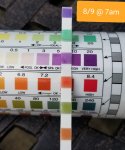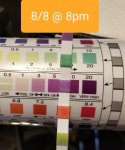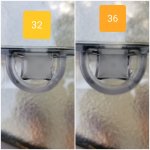Hello please look at attached images where i have added pool chemistry results and photos of pool floor. Not sure how to attack it. If i move that stuf it just turns to "clouds". Nothing on the walls. It accumulates in corners and vinyl indentations and seems.
Thanks
Thanks
Attachments
-
 20190807_175645.jpg326.4 KB · Views: 49
20190807_175645.jpg326.4 KB · Views: 49 -
 20190807_175516.jpg386.6 KB · Views: 48
20190807_175516.jpg386.6 KB · Views: 48 -
 20190807_175545.jpg219.3 KB · Views: 43
20190807_175545.jpg219.3 KB · Views: 43 -
 20190807_175610.jpg146.5 KB · Views: 53
20190807_175610.jpg146.5 KB · Views: 53 -
 20190807_181556.jpg234.6 KB · Views: 54
20190807_181556.jpg234.6 KB · Views: 54 -
 20190807_175645.jpg326.4 KB · Views: 55
20190807_175645.jpg326.4 KB · Views: 55 -
 20190807_175516.jpg386.6 KB · Views: 37
20190807_175516.jpg386.6 KB · Views: 37 -
 20190807_175545.jpg219.3 KB · Views: 32
20190807_175545.jpg219.3 KB · Views: 32 -
 20190807_175610.jpg146.5 KB · Views: 27
20190807_175610.jpg146.5 KB · Views: 27





